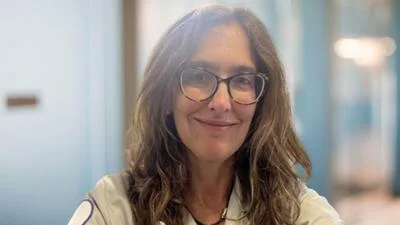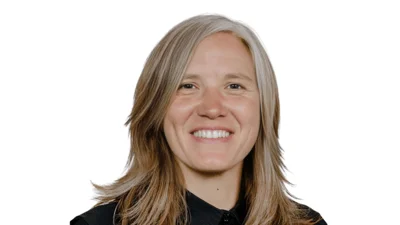Illinois State Board of Education, Balanced Accountability Measure Committee met April 20.
Here are the minutes provided by the committee:
IBAM Members Present:
Thomas Bertrand, Illinois Association of School Boards
Jeff Broom, Chicago Public Schools
Karl Goeke, Illinois Education Association
Dr. Mark Klaisner, Illinois Association of Regional School Superintendents
Dr. Daniel Krause, Illinois Principals Association
Cathy Mannen, Illinois Federation of Teachers
Emily Warnecke, Illinois Association of School Administrators
IBAM Members Absent:
Alicia Geddis, Danville School District 118
Kurt Hilgendorf, Chicago Teachers Union
Diana Zaleski, Illinois Education Association
Erin Roche, Chicago Principals Association
ISBE Staff Present:
Dr. Dana Kinley, Executive Director for Center of Systems of Support
Amy Hyde, Administrative Assistant for Systems of Support
Carolina Fabian, Director of Family and Community Engagement
Rae Clementz, Director of Accountability
Dr. Christine Paxson, Director of ESSA/IL-EMPOWER
Casey Wills, Principal Consultant, ESSA/IL-Empower
Nicholas Heckel, Principal Consultant, ESSA/IL-Empower
Dr. Melissa DiGangi, Interim Research and Evaluation Officer and Director of Research and Evaluation
Dr. JD Chavez, Supervisor, Research and Evaluation
Annie Rojas, Learning Renewal-Research Lead, Research and Evaluation
Christabel Yamoah, Principal Consultant, Research and Evaluation
Taylor Thomas, Principal Consultant, Research and Evaluation
Shuwan Chiu, Principal Consultant, Research and Evaluation
Welcome and roll call was at 2:04 p.m.
Mr. Broom made a motion to approve February 2023 minutes and was seconded by Mr. Goeke.
Dr. Paxson introduced Dr. Melissa DiGangi, interim Research and Evaluation officer and director of Research and Evaluation. She then gave the purpose and relevance of the Research and Development team’s presentation as well as today’s ask of IBAM:
• What does the Statewide System of Support need to do to adequately support our schools?
• What recommendations can we make as IBAM to help the Statewide System of Support be more effective?
Ms. Thomas began a presentation on the Statewide System of Support: 2018 and 1029 Schools in Comprehensive Status Brief.
She paused for questions.
Mr. Bertrand and Ms. Mannen asked that ISBE provide a follow-up of enrollment ranges, or threshold numbers, for small, medium, and large schools.
Ms. Rojas continued the presentation on the Statewide System of Support: 2018 and 1029 Schools in Comprehensive Status Brief.
Ms. Taylor provided a recap of the findings from the presentation.
Dr. Paxson opened the floor up for discussion and questions.
Mr. Goeke asked if anyone had any idea how the growth made by designated schools compared to the non-designated schools that are not in status since we know the bottom 5% is always going to be in status. What does the growth look like when compared to other non-designated schools?
Dr. Paxson asked the Research Department representatives if they had that information.
Dr. DiGangi stated they did not conduct that analysis as this report was focused on the designated schools.
Mr. Goeke then stated he was wondering if we have schools that are going from designated to Targeted or whatever, what did the growth look like? Is it comparable for Targeted to be moving to Commendable and Commendable moving to Exemplary? Is that data discrete? He said he thinks that tells us something about the system that is in place. If we are seeing similar growth occurring in all the categories, then we’re doing a shelving. Because we will always have school in status. Because if that’s what happening, then we acknowledge that out loud.
Dr. Kinley stated the concept of what Mr. Goeke said in terms of we will always have schools in status, that is true. That is the model’s design, because the goal is to raise the floor of student performance over time. Who and whatever schools are identified by the state accountability system to receive that special attention through school improvement support -- that is the whole purpose of IL-EMPOWER and the School Improvement Grant. We will always have schools in status; what do we need to do to help them get out of it? So we raise the floor.
Mr. Goeke stated he is aware how the system works and how it interacts with the Every Student Succeeds Act (ESSA). He wants to be clear that these designations hold meaning within the community and the public sphere, so we need to be intentional how we talk about this in the public and how the public perceives what’s going on with these schools. If we are seeing similar growth in schools, we need to acknowledge that publicly to avoid unintentional shame and blame.
Ms. Clementz stated typical growth rate of schools that fall in the exemplary category is higher than 60. Commendable range can vary and can have rates of growth in the 30s-50s. When referring to a targeted group, you are not talking about the entire school, but a specific group of students. So the rate of growth with that specific group of students does tend to be comparable to that of schools that fall in the lowest 5%; that lowest 5% tends to have growth rates around 35 so they do not have similar rates of growth.
Mr. Goeke relayed what Ms. Clementz explained and Ms. Clementz stated that he was correct.
Mr. Bertrand stated most high school met the benchmark for graduation rates, but few met the 9th grade on track. What does that mean two or three years from now?
Ms. Clementz stated she has been watching that data closely and will know more when we have 2023 data. Ms. Clementz’s attention has been to speak to the high schools and draw their attention to the 9th grade on track numbers and intervene, if necessary. COVID-19 could have been a factor, but we will know more information when we get 2023 data in to see if the pattern exists or to see if it appears to be a one-year anomaly.
Mr. Bertrand stated that was the one data piece he was most curious about and asked what the 9th grade on track is rated at.
Ms. Clementz stated it is 8.03.
Ms. Mannen asked if there was an analysis done of pre-COVID versus COVID and beyond on chronic absenteeism at the elementary level.
Ms. Clementz stated it has increased and we have been tracking it with our Technical Advisory Committee (TAC). TAC members were not comfortable recommending any changes in 2022 to the scoring formula and believe we are settling in at a new normal. We don’t have preliminary chronic absenteeism from 2023 yet, but when we looked at preliminary data in 2022, too much data was missing to get a good picture. We will be considering adjustments to the scoring of chronic absenteeism to reflect the new normal.
Dr. Kinley stated the scope of the analysis the Research Department did was very narrow this time through. The broader look will be conducted through the external program evaluation and that procurement that is being developed right now. We feel today’s report is an interim brief to get us all thinking about areas where there are gaps. The more in-depth report is coming.
Mr. Goeke asked Ms. Clementz if the mental health days versus days that are taken for physical health are taken into consideration when reviewing absenteeism? Is there a way the system can break that down?
Ms. Clementz stated that 2023 would be the first year to access that data as that is the first time districts would be able to identify mental health absenteeism. She did not know if the data would be accurate or not as this is the first time looking at it and would like to have the full data sent in to see what it shows.
Mr. Broom asked the definition of a cohort and questions about the ISBE Strategic Plan and how this report was conducted.
Dr. Paxson stated she put two questions in the chat to consider after reviewing the brief:
1. What does the Statewide System of Support need to do to adequately support our schools?
2. What recommendations can we make as IBAM to help the Statewide System of Support be more effective?
Dr. Paxson then stated that we would send today’s presentation as well as the two questions out to the committee after the meeting for members to review and think about.
Ms. Mannen stated the information is what committee members have been asking for and it was helpful, and asked if it was the intention that a similar analysis was going to be done and if that information would be shared with the IBAM Committee.
Dr. Paxson stated it was hoped that we could have a continued partnership with the research team and find ways to better analyze what is working or not working so we can better support our districts and schools.
Dr. Kinley reminded all IBAM Committee members that each year, IL-EMPOWER will bring some sort of an annual report to give to the panel. This is an annual expectation that IBAM can have, but in somewhat different formats.
Mr. Goeke asked if we know what the one school that jumped to exemplary status did and are there any trends?
Ms. Clementz stated the short answer was that that school tested its students and there would be some case analysis done on the trends. We would know more once we exit the first cohort of schools.
Mr. Goeke thanked everyone who put this information together for the team; it confirms that socioeconomic status is a big indicator and students of color are disproportionally affected.
Ms. Mannen asked for any final thoughts on what was presented.
Dr. Kinley asked the research team to introduce themselves.
Ms. Mannen moved the conversation to the next agenda items of needs assessment recommendations, development of standardized progress monitoring metrics and public report requirements, and school board member training on responsibilities for school improvement.
Ms. Mannen asked if the current needs assessment tool was satisfactory, or does it need to be revisited and revised? She opened the conversation to Mr. Broom to discuss Chicago Public Schools (CPS) changes in its school excellence framework and feedback about what kind of support the current needs assessment tool has gotten.
Mr. Broom gave an update on the CPS school excellence framework. The district is currently redesigning its evaluation rubric and improvement processes to be more in alignment with its new approach to accountability.
Dr. Kinley stated we have a unique opportunity as a committee to look at our current practices using the Illinois Quality Framework and Supporting Rubric (IQFSR) for the school-level needs assessment. She asked if there was a better way forward for us to implement a school-level needs assessment to fulfill the requirement in ESSA to have baseline data for all schools in status and meeting the schools’ local needs. Is the IQFSR the instrument we need to continue using?
Mr. Broom stated Mr. Roche would be able to offer another perspective of the implementation in CPS. Ms. Mannen asked Dr. Paxson what the feedback from the field has been.
Dr. Paxson stated there is a presentation that can be shared, and there is a bit of confusion in the field about who should be answering questions and using the information effectively. This is our opportunity to have a strong base foundation for the needs of each of our schools. So how can we use this information to launch the priorities that turn into Specific, Measurable, Achievable, Relevant, and Time Bound (SMART) goals that then become the foundation for school improvement planning? We have examples we can share of how districts have used the IQFSR effectively in their schools. What are our practitioners saying about the tool itself?
Ms. Mannen stated that feedback would be helpful. We need to focus on our immediate recommendations. This is an opportunity to look at the IQFSR for needs assessment. What is our timeline?
Dr. Kinley stated if this committee wants to come forward and recommend that the IQFSR be replaced, this is its platform to do so. ISBE is happy to listen to your recommendations. We will be choosing a new vendor to provide services in conducting a school-level needs assessment. If we have a common set of expectations, there could be a contractor who can build that process for us based on such input.
Mr. Bertrand asked about Mr. Broom’s changes in CPS.
Mr. Broom clarified the changes and explained that a definition of a quality school is about student outcomes as part of a holistic story.
Dr. Paxson stated in getting a strong and stable foundation, we need to make sure this is not going to be punitive in nature. It is an understanding of school leadership and the needs of the teacher and how they can grow and provide that connection. The format needs to be electronic as the current document is around 40 pages. What is going to be more effective for the end user? There also needs to be a separation of district and building level.
Ms. Mannen asking the committee members their thoughts regarding the statements by Dr. Paxson and Mr. Broom.
Mr. Goeke liked separating the narratives.
Mr. Bertrand said that whatever we do needs to be scalable, sustainable, simple, and supportive. He said he would be in favor to a change that would support those principles.
Mr. Goeke echoed Mr. Bertrand comments.
Dr. Kinley stated once we get the instrument in place, we’ll have those modeling services with the new vendor to walk them through the whole process.
Ms. Mannen stated that that gets back to what Mr. Bertrand stated -- scalable, sustainable, simple, and supportive.
Mr. Bertrand stated that getting big and complicated is a concern when using vendors.
Mr. Goeke asked is the vendor looking for the best interest or is it looking to make a profit off the schools? It needs to be a one-page manual.
Dr. Kinley stated that is why we are asking for IBAM’s input, so we drive those services being provided and we develop the process.
Dr. Paxson echoed what Mr. Bertrand and Mr. Goeke stated.
Ms. Mannen transitioned to needs assessment for more intensive supports work that she, Mr. Kraus, and Mr. Roche worked on from the April meeting for recommendations.
Mr. Goeke and Mr. Bertrand stated they were good with the recommendations but wanted to add to have the board of education representation be involved in the School Improvement Plan decisions.
Ms. Warnecke echoed the same.
Dr. Klaisner said thinks Mr. Bertrand should publish the four S’s -- scalable, sustainable, simple, and supportive.
Mr. Broom stated he is seeing a lot of alignment with CPS.
Ms. Mannen talked about next steps and having feedback from members to bring to the May meeting. This will provide a clean copy of the needs assessment for more intensive supports to finalize a recommendation to present to the Illinois State Board of Education. Ms. Mannen then transitioned the meeting to the next agenda items that Mr. Bertrand, Mr. Goeke, and Ms. Warnecke worked on.
Mr. Bertrand discussed the charge of developing some recommendations for consideration of key elements and timeline of board training, progress monitoring, and public reporting for schools that remain in status. This recommendation has been developed using four guiding principles:
• Scalable
• Sustainable
• Simple
• Supportive
Mr. Bertrand also stated there was still work to be done.
Ms. Warnecke stated this was great work and they made sure the recommendations about the assessment piece is simple and manageable.
Mr. Broom stated their work was good and thoughtful. He wondered if we should track our changes as we go in the drafts. How does this apply to Chicago, local school councils, charter boards versus the Chicago board? He stated that we need to be understanding of the audience.
Mr. Bertrand stated he would like the next part of the conversation to be with Mr. Broom and Mr. Roche because of the differences with CPS.
Ms. Warnecke stated they had discussed the difference with rest of state and CPS and that Mr. Broom and Mr. Roche would need to be pulled into the conversation.
Ms. Mannen stated she appreciated how intentional this work was.
Mr. Bertrand stated if the Illinois Association of School Boards (IASB) does this training it will take place in open session.
Ms. Mannen called for public comment; there no public comment.
Mr. Bertrand stated that his time with IASB is ending June 2023 and Kimberly Small will be taking his place. He stated that he had been sharing IBAM information with her and gave his recommendation for her to take his position on the IBAM Committee.
Motion to adjourn the meeting made by Mr. Goeke and seconded by Mr. Bertrand. Meeting adjourned at 4:04 p.m.
https://www.isbe.net/Documents_BAMC/20230420-Minutes.pdf





 Alerts Sign-up
Alerts Sign-up